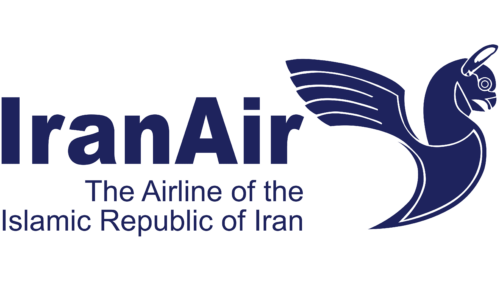Iran Air’s logo is like an airplane carpet – modern and ancient at the same time. It doesn’t just take people from point A to point B; it carries the stories, spices, and spirit of Iran. It glides over the vast Iranian deserts and bustling Tehran markets before landing in faraway lands. It is not just an airline; it is Iran’s wings spread out to welcome neighbors near and far. Like the friendliest host at a Persian tea party, it welcomes everyone who gets on board and then shows them the world from its own unique perspective. When people see this plane, they don’t just think of it; they think of Persian poetry in the sky and a sense of home, even many kilometers above the ground.
Iran Air: Brand overview
The history of Iran Air began in 1944 with the establishment of Iranian Airways by Iranian businessman Reza Afshar, who aimed to develop civil aviation in Iran. Initially, the airline operated domestic flights using small piston-engine aircraft, pioneering the aviation industry in the country. Two years later, the Iranian government founded Persian Air Services to focus on domestic and international routes, supported by state resources for rapid expansion.
In 1954, Iranian Airways and Persian Air Services merged to create United Iranian Airlines, later renamed Iran National Airlines Corporation in 1961, reflecting its role as the national carrier. In the 1960s, the company expanded its international routes by introducing jet aircraft like the Boeing 727 and 737, enhancing service quality and global competitiveness. During the 1970s, the airline flourished as one of the leading airlines in the Middle East, adding wide-body aircraft like the Boeing 747 and becoming the first non-European customer to order the Airbus A300 in 1974.
However, the Islamic Revolution in 1979 brought challenges, leading to changes in management and restrictions on international flights. Throughout the 1980s, the company navigated through the Iran-Iraq War, focusing on domestic services due to reduced international flights. Despite hardships, the airline maintained air connectivity within and outside the country.
In the 1990s, after the war, the company gradually restored its international network despite facing international sanctions that limited fleet modernization and route expansion.
In the 2000s, the airline continued operations under sanctions, relying on an aging fleet and struggling to compete with other airlines. Nonetheless, it remained a vital link between Iran and the world, serving destinations in Europe, Asia, and the Middle East. The signing of the nuclear agreement in 2015 allowed the airline to modernize its fleet and expand its route network.
From 2016 to 2017, the company placed significant aircraft orders from Boeing and Airbus to modernize its fleet and enhance operational efficiency. However, political changes and the re-imposition of sanctions disrupted the plans.
2018, the airline encountered new obstacles as international sanctions against Iran were reinstated. This forced the company to review its fleet renewal strategies as existing contracts with Boeing and Airbus were at risk due to limitations on aviation equipment supply to Iran. Despite these challenges, the company continued operating its main routes, although with certain restrictions.
In the same year, just before the sanctions were enforced, the airline received three new ATR 72-600 aircraft out of the 20 units previously ordered. These new turboprop planes enhanced services on regional routes within the country. As of 2022, the company remains crucial in maintaining air connectivity between Iran and other nations. Despite ongoing international restrictions, the airline has sustained its route network, including flights to Europe, Asia, and the Middle East.
Meaning and History
What is Iran Air?
Iran Air, or Iran National Airline, is Iran’s national flag carrier headquartered at Mehrabad Airport in Tehran. As of 2023, the airline operates scheduled flights to 72 destinations in Asia and Europe. Its main operating bases are at Imam Khomeini International Airport and Mehrabad International Airport, serving the capital city of Tehran. Domestically, the airline is known as Homa, a name derived from the mythical Persian phoenix or griffin. In Persian, it is also short for Iranian National Airlines.
1979 – today
The logo of the national airline depicts a mythological creature named Homa, a character from Iranian legends and fairy tales. It is believed that this bird never lands because it has no legs. It is impossible to catch it, and meeting with its shadow, according to beliefs, brings happiness to life. The creators of Iran Air’s emblem gave this creature a griffin’s head and a large wing. The name of the company is written in bold letters without spaces between two words. Under it is the phrase “The Airline of the Islamic Republic of Iran.” Both the letters and the Huma bird are colored dark blue.
The choice to use the Huma bird serves as a powerful symbol associated with cultural and national identity. Its mystical properties echo Iranian heritage and folklore, giving the branding added depth. The use of dark blue for both the text and the Huma bird itself creates a unified, authoritative image. The phrase beneath the company name clearly identifies the nationality of the airline, reinforcing the logo’s purpose as a representative of Iranian aviation.





